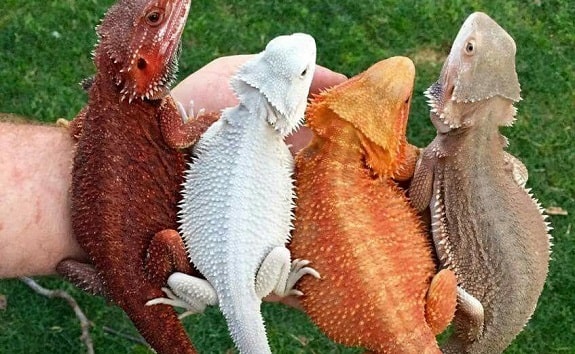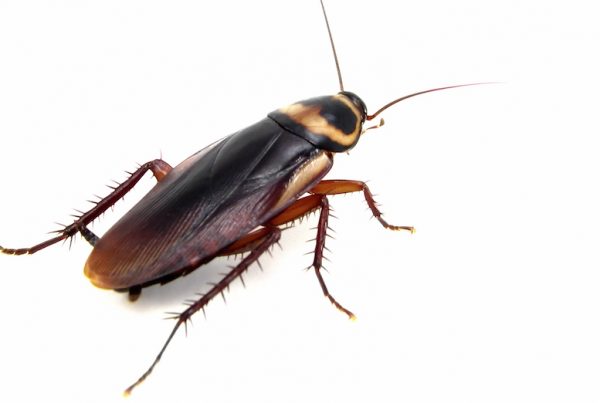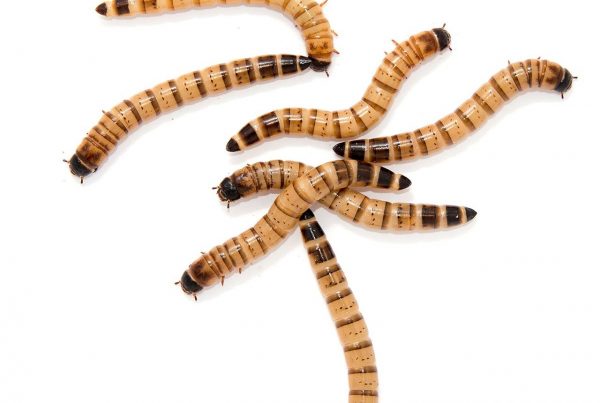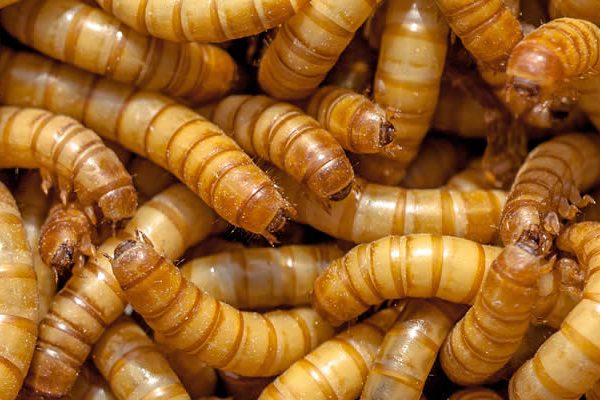Bearded Dragon care sheet:
Bearded dragon have quickly become a very popular pet among most reptile enthusiasts as well as beginner reptile keepers. As babies they require a bit more patience and attention but as adults they are one of the most relaxed and easy to care for reptiles in the hobby.
You get various different coloured bearded dragons with different attributes (Silkies, leather back and normal). To find out more about the different types of bearded dragons, please click here.
Bearded dragon safe food list
Insects:
Bearded dragons should eat a variety of different insects to ensure a well-balanced diet, we recommend the following insects:
| SilkwormsCricketsSuperwormsTurkestan roaches | Dubia RoachesBlack soldier fly larvaeTurkestan RoachesMealworms |
Just as bearded dragons need to eat a variety of insects, they also need to ensure a variety of veggies in their diet, we recommend the following vegies to be included in their diet:
| Staple greens | Occasional greens |
| AlfafaCactus pads/leafCactus pearCollard greensMustard greensDandelion greensTurnip greensWatercressSweet Potato | ButternutCarrot TopsCelery LeavesCilantroCucumber (peeled)KaleKohlrabi LeavesParsleySwiss Chard |
| Occasional greens | Greens to never feed |
| Bell PeppersBroccoliCarrotsCauliflowerCelery StalksGreen PeasPumpkinZucchini | Beet GreensSpinachTomatoesAvocadosRhubarbLettuce Beet greens and spinach are high in oxalic acid (oxalates), which is a calcium-binding agent that limits the absorption of calcium. Feeding these foods regularly can increase the risk of Metabolic Bone Disease and other issues. |
Feeding for bearded dragons: Sizing, ratios, quantity and times per day
0-3 Months
Hatchlings up until three months of age will have a diet consisting mainly of insects (80% insects to 20% veggies). They will need to eat about 3 – 4 times per day and eat as much as they can in a ten minute setting however, you can aim for about 20 – 30 XS insects per feeding.
3-6 Months
Bearded dragons aged 3-6 months should be eating a diet that still consists of mainly insects (80% insects to 20% veggies), this is because they require the protein content from the insects in order to grow. You will notice that your beardie will grow tremendously over the next 9 months. At this stage we recommend feeding about 20 – 25 Small – Medium sized insects.
6-9 Months
Continue feeding primarily insects, as mentioned earlier growing beardies will require more protein in their diet. At this stage you can feed them between 1-2 feedings per day with about 10-20 Medium to large sized insects.
Up until this point you have been feeding an insect to vegetable ratio of 80%-20%. From 9 months, we aim to start shifting the ratio gradually.
9-12 Months
Continue feeding 1-2 times per day with an insect to vegetable ratio of about 70% – 30%. Depending on the size of your bearded dragon, you can feed them between medium and large sized insects.
Older than 12 Months
Bearded dragons older than 12 months do not require as much protein as they did before and will most likely eat vegetables much easier than a baby or juvenile would. From now on we recommend feeding a fresh mix of vegetables every day with about 40 medium to large insects per week.
Cage decorations and accessories:
Most first time bearded dragon owners envision an enclosure with desert sand which is understandable seeing that bearded dragons come from the dry and arid regions of the desserts in Australia. Although, it gives the enclosure the natural feel that all good reptile owners set out to obtain, there is the risk that your beardie will require the help from a vet due to impaction caused from the sand. Impaction is a health ailment that occurs when there is a build-up of matter (In this case it could be the sand) inside the gut or intestines which does not allow for ordinary bowl movements. Impaction can be life threatening which is why you should always monitor that your bearded dragon is consistently passing stool.
We recommend using newspaper or paper towels for bearded dragons, but still allow for “outside time”. When you have some free time take your beardie out for a walk (You can use a harness for this) to allow them to experience different terrains. Other people have had great success using non-slippery tiles in their enclosures.
Safe wood
Drift wood and dry grape vine make excellent additions to any reptile’s enclosure, giving you a much more natural feel wit non-toxic wood.
Which bulbs to use and why:
1. UVB 10.0 bulb or tube
Bearded dragons require at least 8-10% UVB bulbs which should be positioned inside of their enclosures. We also recommend using reflectors on the top side of the bulbs to make sure that your beardie is getting all the UVB necessary. Use the above mentioned drift wood and grape vines to assist your beardie in getting closer to absorb more UVB rays. (Remember to make sure it’s not close enough for them to climb the bulbs or get burnt by any other bulbs).
2. Day light basking bulb
The daylight basking bulb is literally used to imitate the suns colour and provide the necessary heat your beardie would get from above. As mentioned above, provide natural ledges for your beardie to climb up if they feel the need for more heat without allowing them to get burnt. As an additional preventative, get a lamp cover to prevent your beardie touching the light directly.
3. Ceramic heat emitter
A ceramic heat emitter does not emit any lights which make them the ideal heat source for night time. They do not disturb your pets sleeping patterns but just allows them to keep warm. We will always recommend using a thermostat on any heat sources to ensure that your pet does not overheat. As an additional preventative, get a lamp cover to prevent your beardie touching the light directly.
4. Heating pad
A heating pad is not always recommended with bearded dragons but is something we like to use during winter to add additional heat. Just as mentioned before, make sure to connect the heating pad to a thermostat so you do not run the risk of burning your beardies stomach. Place a ceramic tile on top of the heating pad, this will help distribute the heat evenly instead of keeping the heat in one localised space.
What size and type of enclosure
BIGGER IS ALWAYS BETTER, if you can provide your bearded dragon with more space, feel comfortable to do so because they will appreciate it! We recommend getting the wooden reptile enclosures, they are generally the standard and make good enclosures to insulate during winter. We offer bearded dragon enclosures in three sizes:
600mm x 350mm x 350mm
900mm x 350mm x 350mm
1200mm x 350mm x 350mm
If you prefer, you can get the 600mm enclosure for babies and youngsters however, it is not necessary. We recommend purchasing the adult size enclosure from when they are small to avoid any unnecessary costs in future.
Bearded dragon behaviour – what it means:
Black bearding: Either scared, in pain, sick or feeling threatened.
Mouth open: Trying to regulate heat.
Head bobbing: Dominance, aggression or mating signal.
Beard puff: Trying to look intimidating
Tail twitching: Stress, hunting prey, signal of breeding season.
Digging: Trying to get comfortable and if female possibly going to lay eggs.
Hissing: Feels threatened/ aggressive.
Glass surfing: Sees its own reflection, bored, hungry or uncomfortable.
General tips:
- Males must never be housed together.
- Ensure that you have a hot and cold side, allowing your bearded dragon to choose on their own. Aim for the basking spot to sit between 38°C and 40°C. The cool side should sit between 24°C and 29°C.
- Night time ambient temperature should be between 20°C and 23°C.
- Always dust your insects but not so much that they are little white balls. You want to lightly dust them that they carry just a bit of the extra nutrients per insect.
- Bearded dragons are desert animals and will not always drink from a water bowl, this is why it’s sometimes recommended to mist their veggies with a little bit of water to make sure they getting enough water.
Bearded dragons and MBD
What is MBD?
- MBD stands for metabolic bone disease – a condition found in pretty much all reptiles as a lack of calcium and vitamin D.
- It is a calcium deficiency in the bones – similar to what we know as Osteoporosis.
- Bones become brittle, light, easily broken and even warped.
- Reptiles use vitamin D (Gained from the sun or UVB lighting) in order to break down the calcium compounds through their skin in order to deposit to their bones.
How to prevent MBD?
- Prevention is always better than cure… Remember that MBD is Irreversible, once the effects of MBD are noticeable it will never be the same which is why it is so important to make sure you follow the correct guidelines mentioned above.
How to diagnose MBD?
- First and foremost, if you have a suspicion that your bearded dragon is developing MBD visit your local reptile specialist vet for confirmation and treatment.
- Early signs include: warped elbows, swollen legs, muscle twitching and fragile bones.
How to treat MBD?
- The first thing required to treat a bearded dragon (Or any reptile) with MBD is to make the appropriate adjustments to their housing and diet. By ensuring that the bearded dragon gets their food in the recommended quantities from the safe list provided above will go a long way. Dusting with Calcium and vitamins is required for every meal. The best form of UVB will always come from the natural sunlight (Please make sure it is direct sunlight, as the UVB rays will get filtered through glass) so this will not help at all.
- Make sure to contact your specialist vet immediately for an appointment. They will prescribe the necessary boosters and supplements to assist your beardies recovery.
How to gut load your live food effectively:
What is gut loading?
Gut loading is the simple process of adding vital nutritional value to the bugs prior feeding them to your reptiles.
Why gut load?
Gut loaded food is far more beneficial and valuable to your insectivorous pet. I’m sure you have heard the saying “You are what you eat”, and the same goes here, you pump your pet full of prime conditioned food and your pet will over time reach prime condition.
How to gut load and what to gut load with:
An important consideration is that all insects carry different nutrients and will be more and less valuable for different reasons. This is why it is always highly important to ensure that your bearded dragon has access to a varied diet of insects and veggies at all times.
General list of foods to feed your insects:
- We recommend feeding your insects at least 24 hours before feeding your pets for the best gut loading results. We also recommend using a mix between dry and wet food, take a look at our cricket and roach chow here which contains various vitamins, long chain carbohydrates, calcium, fibre, natural antibiotics and natural moulting hormones to stimulate positive growth in insects.
- For your wet food, you can use the following mix and quantities to provide to your insects for a great gut loading benefit:
| KaleSpring greensButternutDandelion greens | Sweet potatoApple Alfalfa sproutsMustard greens | Mustard greensMicro herbsCollard greensCarrots |
The list mentioned above for gut loading is just a guide line and you can mix and change as you feel, try to get a nice mixture of dark veggies, sprouts and fruits.
Set Up checklist – before getting your beardie
| Enclosure | Substrate | UVB 10.0 | Ceramic heat |
| Day lamp | Branches/logs | Hide | Lamp covers |
| Thermometer | Thermostat | Calcium with D3 | Calcium without D3 |
| Multivitamin | Heat pad | Tiles | Hide |





Recent Comments